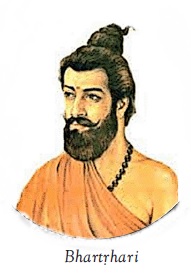Translation by Hari Parsada Dasa, commentary by Caitanya Carana Dasa


kanya — bride; varayate — desires; rupam — beauty; mata — the mother [of the bride]; vittam — [desires] finance; pita — the father [of the bride]; srutam — [desires] education; bandhavah — the immediate relatives; kulam — a prestigious family; icchanti — desire; misöannam — sweets; itare — other; janah — people;
“[In a typical Indian wedding], the bride desires a smart and handsome man; her mother desires a financially stable man; her father desires a highly educated man; the immediate relatives desire a man from a prestigious family; and all others — they simply desire to have good sweets in the wedding feast!”
— (Subhasita-ratna bhandagara, Samkirnakaprakarana, page 387, Verse 401)
This verse illustrates graphi cally that our desires shape our vision. Even while seeing the same thing, people see different aspects of that thing. That our desires shape our vision is acknowledged in the Bhagavad-gita. The Gita contextualizes our perceptions in its analytical framework of the three modes of material nature: goodness, passion and ignorance. Different people see things differently based on the specific combination of modes that colors their mental world.
In the Mahabharata, when Arjuna disguised as a brahmana won Draupadi’s hand in the svayamvara, Drupada sensed that his to-be son-in-law was actually a ksatriya. So, when he invited the bridegroom and his family for a banquet at his palace, he arranged to have on display in the dining hall sacrificial paraphernalia, weapons and plows – items associated respectively with brahmanas, ksatriyas and vaisyas. Arjuna and his brothers went straight to the weapons, examined them carefully and started talking about them animatedly. From their spontaneous attraction to weapons, Drupada concluded that they all were ksatriyas, as was soon confirmed when they revealed that they were the Pandavas.
That different people see things differently doesn’t justify metaphysical relativism, the notion that there is no objective truth. The variety in vision just means that we may not be seeing the objective truth, at least not at first glance. Gita wisdom firmly asserts that objective truths do indeed exist – and that all such truths are founded in the ultimate reality, the Absolute Truth, Krishna .
Significantly, although Krishna is the Absolute Truth, to approach him, we don’t have to reject all subjectivity. Gita wisdom explains that our subjectivity springs from our individuality. And our individuality is ultimately a characteristic of our spiritual essence, our soul. So, subjectivity exists in the spiritual realm too and can be used in approaching Krishna .
The whole concept of rasa, as applied to bhakti by the Gaudiya Vaisnava tradition, reveals how transcendental subjectivity can enhance devotion. When Krishna returns from the forest in the evening and has dustmarks on his body, the cowherd boys who had stayed back see those marks as signifying that he had played joyfully, and they long to play with him. The elderly cowherd women see those marks as signifying that Krishna needs a bath, and they long to bathe him. Though they both see the same thing, they interpret it differently based on the flavor of their relationship with Krishna . Yet despite their different interpretations, they both become intensely absorbed in him.
Srimad-Bhagavatam (10.43.17) describes how various observers saw Krishna when he entered Kamsa’s wresting arena in Mathura: “The wrestlers saw him as a lightning bolt, the men of Mathura as the best of males, the women as Cupid in person, the cowherd men as their relative, the impious rulers as a chastiser, his parents as their child, Kamsa as death, the unintelligent as the Supreme Lord’s universal form, the yogis as the Absolute Truth and the Våsnis as their supreme worshipable Deity.” Here some of the observers were not devotees – they didn’t become devotionally absorbed in Krishna .
